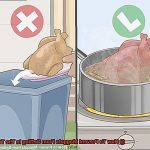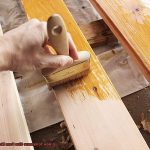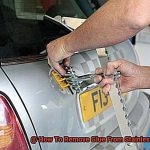Are you tired of staring at stubborn glue residue on your plastic items?
It’s frustrating to see your once-pristine objects marred by unsightly stains. But don’t fret, my inquisitive readers, because today we’re going to delve into the art of removing glue from plastic.
Maybe you accidentally spilled glue on your plastic surface, or perhaps your little Picasso got carried away with their latest masterpiece. Whatever the cause, we’ve got you covered with safe and effective methods that won’t break the bank or harm your health.
In this blog post, we’ll explore a variety of techniques for removing glue from plastic. From vinegar to rubbing alcohol to oil, we’ll show you how to use household items to get rid of that pesky residue.
We’ll even teach you how to employ a hairdryer for maximum effectiveness. But that’s not all – we’ll also provide handy tips to keep in mind when tackling glue stains on plastic surfaces.
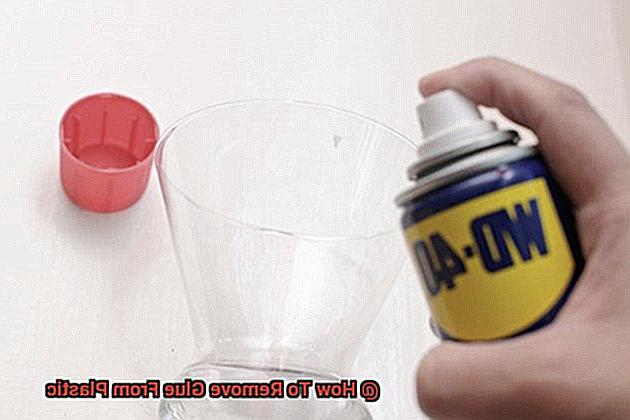
So sit tight and read on as we share our expertise on how to remove glue from plastic with ease and confidence.
Using Rubbing Alcohol to Remove Super Glue from Plastic
Contents
- 1 Using Rubbing Alcohol to Remove Super Glue from Plastic
- 2 Utilizing WD-40 to Loosen Adhesives on Plastic Surfaces
- 3 Baking Soda and Water Paste for Sticky Residue on Plastic
- 4 Vinegar or Lemon Juice to Dissolve Adhesive
- 5 Warm Water and Dish Soap for Dried Super Glue on Plastic
- 6 Nail Polish Remover or Vinegar for Tough Adhesive Residues
- 7 Conclusion
This common household item can be used to dissolve the bond between the glue and plastic, making it a breeze to remove. Before using rubbing alcohol, it’s important to test a small area of the plastic first to ensure that it won’t cause any damage or discoloration.
Once you’ve done this, apply a small amount of rubbing alcohol to a cotton ball or swab and gently rub it onto the affected area. Don’t worry if it takes some time for the glue to loosen – patience is key.
If the glue is being especially stubborn or has been on for an extended period of time, try soaking the affected area in rubbing alcohol for several minutes before attempting to remove it. After soaking, gently peel away the glue with a plastic scraper or your fingers and wipe away any remaining residue with a clean cloth.
It’s crucial to handle rubbing alcohol with care. Always use it in a well-ventilated area and avoid contact with your skin and eyes.
Mixing rubbing alcohol with other chemicals or cleaners can generate hazardous fumes, so never do this.
Utilizing WD-40 to Loosen Adhesives on Plastic Surfaces
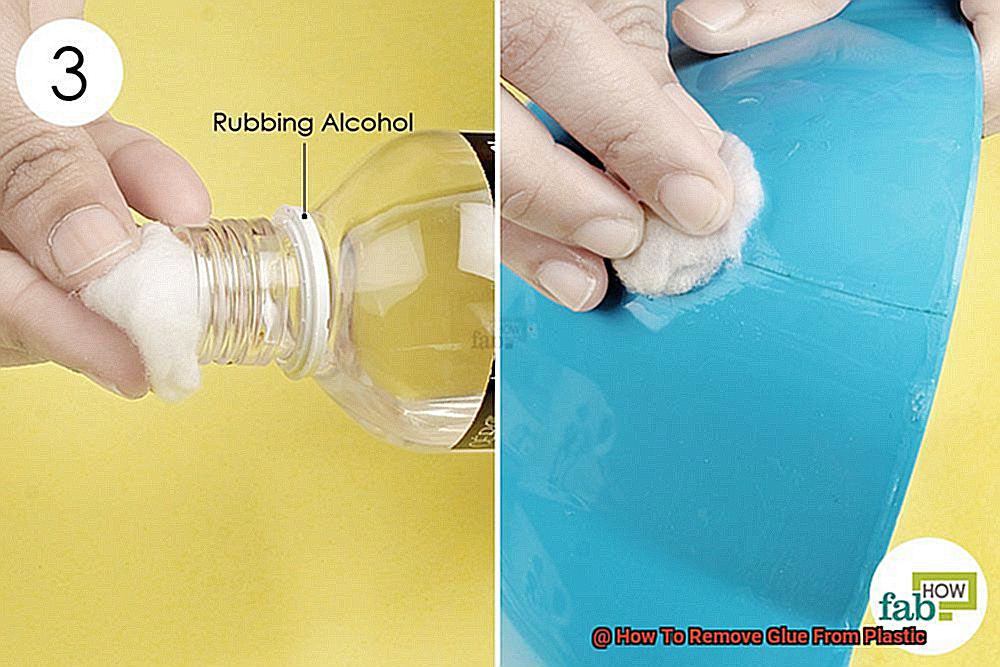
As an expert in utilizing WD-40 to loosen adhesives on plastic surfaces, I am excited to share with you some simple yet effective steps to get rid of those pesky glue stains.
First things first, generously spray a healthy amount of WD-40 onto the affected area and let it sit for a few minutes.
It works like a superhero, breaking down the adhesive bond and making it easier to remove without causing any damage to the surface. Allow WD-40 to work its magic and penetrate the adhesive’s strength.
Next, grab a plastic scraper or an old credit card and gently scrape away the glue residue from the surface. Don’t apply too much pressure or use sharp tools that could scratch or damage the plastic.
Be gentle like you’re handling a delicate butterfly. If there are still some stubborn areas where the glue is not budging, don’t worry.
Reapply more WD-40 and repeat the scraping process until all the adhesive residue is removed. It may take a few attempts, but trust me, it will be worth it in the end.
Now that all of the glue has been successfully removed, use a damp cloth to wipe away any remaining WD-40 residue from the plastic surface. It’s like giving your plastic surfaces a relaxing spa treatment after being stuck with glue for so long.
However, it’s important to note that while WD-40 is effective in removing most adhesives from plastic surfaces, certain types of superglue may require alternative methods like acetone or nail polish remover to dissolve the adhesive. In conclusion, by utilizing WD-40 to remove glue from plastic surfaces, you can easily say goodbye to those sticky stains without causing any damage.
Baking Soda and Water Paste for Sticky Residue on Plastic
This popular homemade solution not only saves you money but also provides a gentle yet effective cleaning method that can be done easily at home without causing any damage to your plastic surfaces. Creating this magical paste is simple.
All you need to do is mix equal parts of baking soda and water in a small bowl until it forms a thick paste. Then, apply the paste to the sticky residue on your plastic surface using a soft cloth or toothbrush.
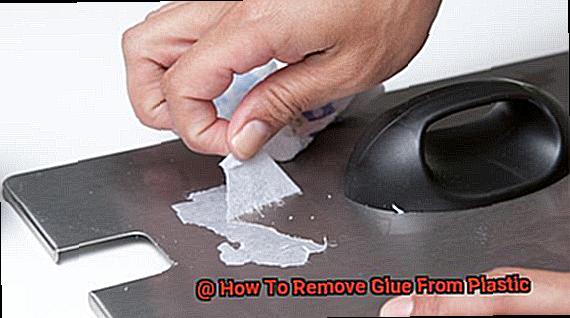
Gently rub the paste into the residue and let it sit for 10-15 minutes. Once the paste has settled in, use a clean damp cloth to wipe away the paste and any remaining residue.
Rinse the plastic with warm water and dry it with a clean cloth. Voila.
Your plastic item is now free from any pesky adhesive residues. This method works wonders for mild to moderate adhesive residues, making it an easy and inexpensive solution that can save you from having to purchase expensive cleaning products.
It’s like giving your plastic surfaces a relaxing spa treatment after being stuck with glue for so long. However, for tougher adhesives like super glue, you may need to try other methods like using rubbing alcohol or nail polish remover.
So, make sure to assess the strength of the adhesive before using this method. In conclusion, baking soda and water paste is a superhero solution for any household cleaning needs.
Not only does it eliminate sticky residue from your plastic surfaces, but it also provides a gentle yet effective cleaning method that can save you time and money.
Vinegar or Lemon Juice to Dissolve Adhesive
There is a superhero solution that can save the day: vinegar or lemon juice.
These natural solvents work like kryptonite to adhesive, breaking down the chemical bonds that hold it in place. To use them, apply a small amount onto the affected area using a cotton swab or soft cloth.
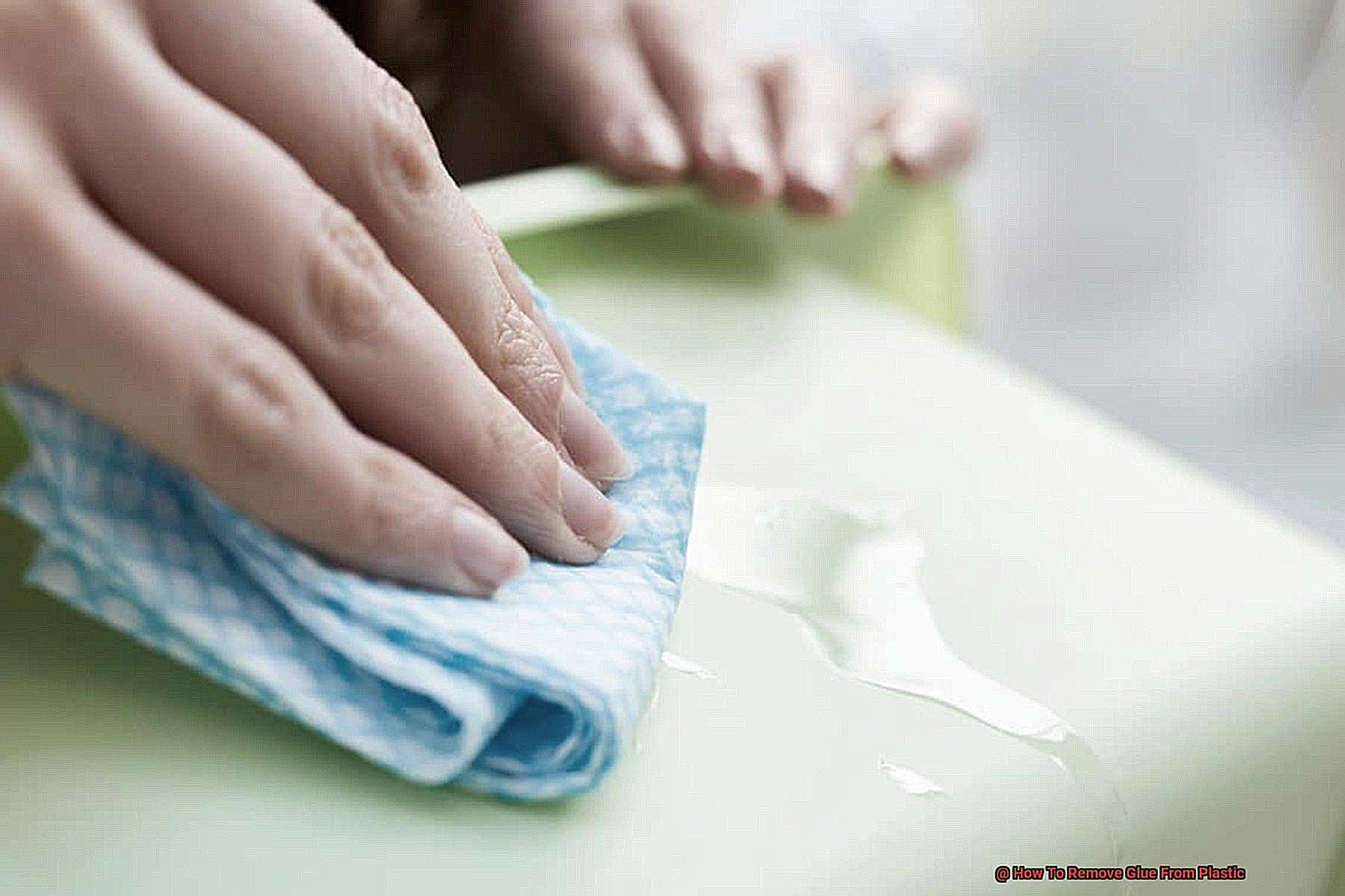
Allow it to sit for a few minutes to allow the acid to penetrate the adhesive. Then, gently scrape off the softened glue using a plastic scraper or your fingernail.
While these natural solvents are effective, like any superhero, they have their limitations. Vinegar and lemon juice may not work as effectively on strong adhesives like super glue or epoxy.
In these cases, you may need to call in the big guns with a stronger solvent like acetone or rubbing alcohol. If you’re ready to tackle stubborn adhesive on your plastic surfaces, vinegar or lemon juice can be an effective and natural solution.
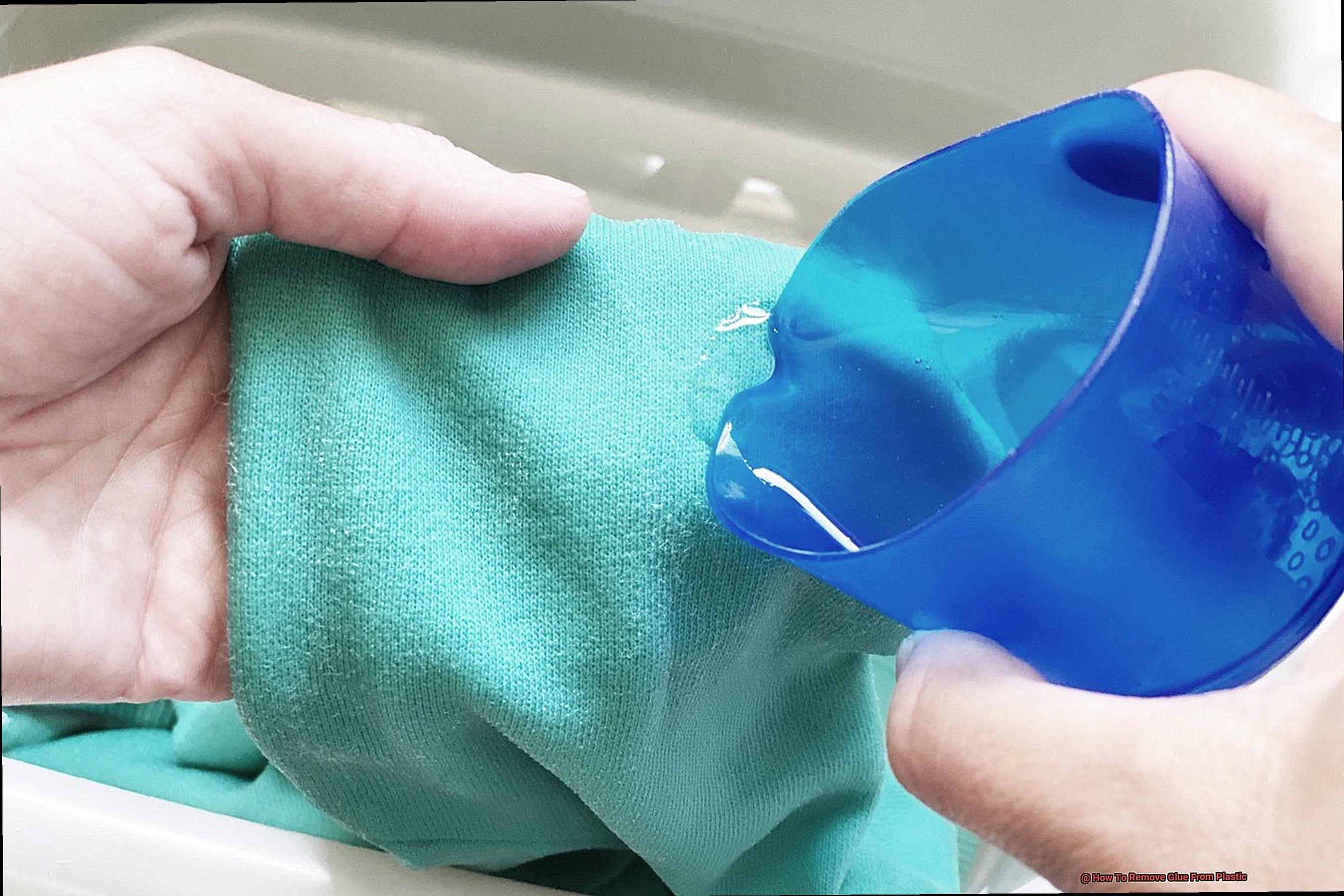
However, it’s important to be patient and persistent if the glue proves stubborn. Avoid scratching the plastic surface while scraping it off.
Warm Water and Dish Soap for Dried Super Glue on Plastic
This effective method is gentle on your plastic and doesn’t require any harsh chemicals or solvents that can be harmful. To start, fill a bowl with warm water and add a few drops of dish soap.
Mix the solution well and let the affected area of the plastic soak for several minutes. The warm water helps to soften the glue while the dish soap breaks down its adhesive properties.
This powerful combo makes it easy to remove even the most stubborn dried super glue. After soaking, use a soft-bristled brush or cloth to gently scrub the area.
Avoid using abrasive materials that could scratch or damage the plastic. If needed, repeat the soaking and scrubbing process until all glue residue has been removed.
Once all the glue is gone, rinse the plastic thoroughly with clean water and dry it with a soft cloth. This method is simple, effective, and can be done at home without any special equipment or chemicals.
In such cases, it may be necessary to seek professional help or use alternative methods such as rubbing alcohol or vinegar.
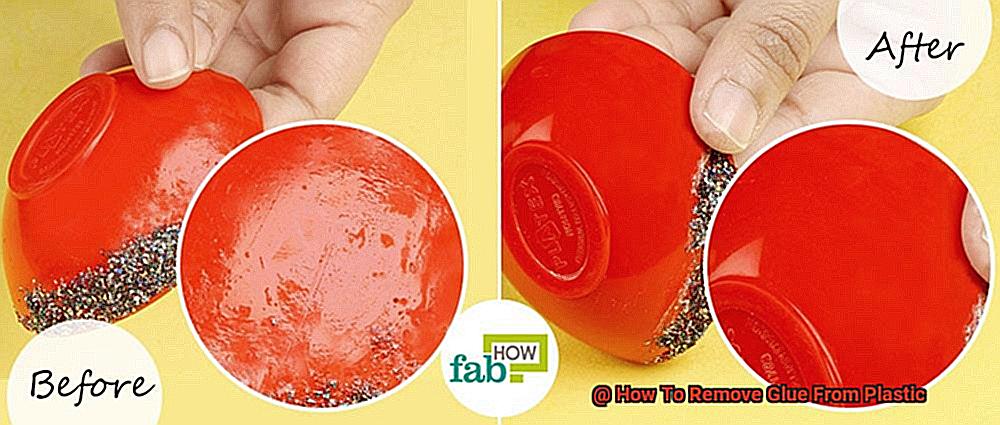
8QNGGQ7nvv0″ >
Nail Polish Remover or Vinegar for Tough Adhesive Residues
Nail polish remover has a secret weapon called acetone that can dissolve many types of adhesives.
However, it’s important to test a small area first, as acetone can damage certain types of plastic. If all is well, simply apply a small amount of nail polish remover onto a cotton ball or cloth and gently rub the affected area.
Remember to wear gloves and work in a well-ventilated area, as acetone can be harmful if inhaled or absorbed through the skin. Repeat the process several times if necessary until the residue is completely removed.
Next up is vinegar – the acidic superhero that helps break down the bond between adhesive and plastic surface. To use vinegar, mix equal parts of white vinegar and water and apply it onto the affected area using a cloth or sponge.
Allow it to sit for several minutes before wiping it away with a clean cloth. Although vinegar may not be as effective as other methods for removing particularly strong adhesives like super glue, it’s still worth a try.
If all else fails, you may need to use a commercial adhesive remover or seek professional assistance.
Also Read: How to Dispose of Vape Juice – DisposeOfThings.com
Conclusion
In conclusion, banishing glue stains from plastic needn’t be a daunting task.
Armed with the right tools and techniques, you can bid farewell to those pesky marks without causing any harm to your plastic surfaces.
From household heroes like vinegar, rubbing alcohol, and baking soda to commercial adhesive removers, there are a plethora of methods that can help you eliminate stubborn adhesive residues.
It’s crucial to handle solvents with care when using these methods and test a small area before applying them to the affected surface. Always work in a well-ventilated area and don gloves if necessary.
Patience is key when tackling persistent glue stains on plastic surfaces. Avoid using sharp or abrasive tools that could scratch or damage the plastic.



